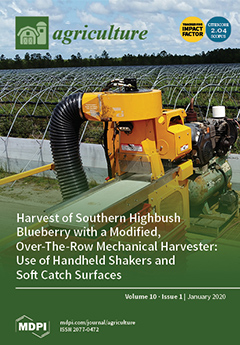Since each greenhouse gas (GHG) has its own radiative capacity, all three gasses (CO
2, CH
4 and N
2O) must be accounted for by calculating the net global warming potential (GWP) in a crop production system. To compare the impact of GHG fluxes from the rice growing and the fallow season on the annual gas fluxes, and their contribution to the GWP and carbon sequestration (CS) were evaluated. From May to April in Bibai (43°18′ N, 141°44′ E), in central Hokkaido, Japan, three rice paddy fields under actual management conditions were investigated to determine CS and the contribution of carbon dioxide (CO
2), methane (CH
4) and nitrous oxide (N
2O) fluxes to GWP. Methane and N
2O fluxes were measured by placing the chamber over the rice plants covering four hills and CO
2 fluxes from rice plants root free space in paddy fields were taken as an indicator of soil microbial respiration (R
m) using the closed chamber method. Soil CS was calculated as the difference between net primary production (NPP) and loss of carbon (C) through R
m, emission of CH
4 and harvest of crop C. Annual cumulative R
m ranged from 422 to 519 g C m
−2 yr
−1; which accounted for 54.7 to 55.5% of the rice growing season in particular. Annual cumulative CH
4 emissions ranged from 75.5 to 116 g C m
−2 yr
−1 and this contribution occurred entirely during the rice growing period. Total cumulative N
2O emissions ranged from 0.091 to 0.154 g N m
−2 yr
−1 and from 73.5 to 81.3% of the total N
2O emissions recorded during the winter-fallow season. The CS ranged from −305 to −365 g C m
−2 yr
−1, suggesting that C input by NPP may not be compensate for the loss of soil C. The loss of C in the winter-fallow season was much higher (62 to 66%) than in the growing season. The annual net GWP from the investigated paddy fields ranged from 3823 to 5016 g CO
2 equivalent m
−2 yr
−1. Annual GWP
CH4 accounted for 71.9 to 86.1% of the annual net GWP predominantly from the rice growing period. These results indicate that CH
4 dominated the net GWP of the rice paddy.
Full article





